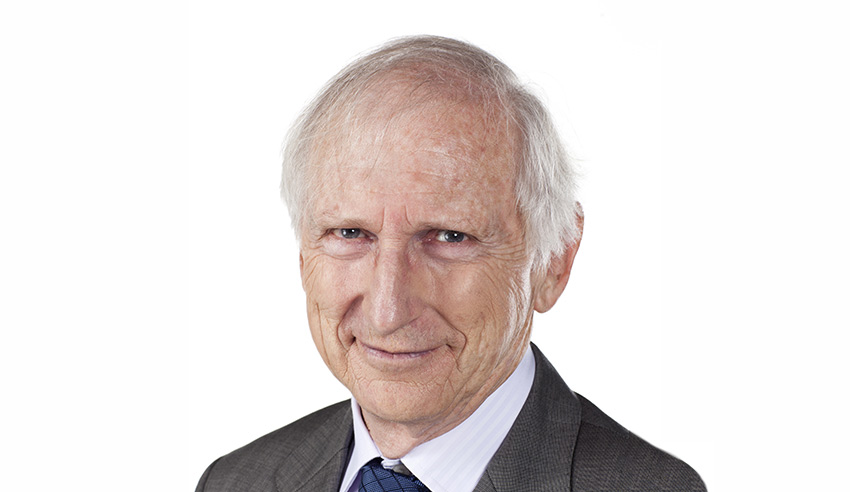Powered by MOMENTUM MEDIA
The science behind building client loyalty to a firm is one worth exploring, writes Bob Murray.

The managing partner of a UK silver circle firm lamented to me that, “Increasingly, clients are interested in partners. Not the firms they work at.” Over the last year, his firm had lost a lot of rainmaking partners to other outfits, resulting in considerable problems and lost revenue.
As a scientist I’d like to share some of the insights I’ve gleaned from the latest research and also from my own experience as a consultant working with law firms all over the world.
A “sticky” relationship from a neurogenetic point of view is one in which both parties would suffer emotional pain if it ends. The object of the exercise for every firm then is to become a deep-seated part of the client’s support network that it is almost inconceivable for them to leave for another.
It is fairly obvious that today there are few of such clients. The reason for that is few firms are able to make the relationship really sticky, which is unfortunate because humans are wired to form strong attachments and someone has to do something really psychologically wrong to derail them.
The science of stickiness
In order to understand why clients stay with your firm or leave, it’s important to understand the fundamental motivators behind all human interactions.
Our relationship world is fairly sharply divided between those who we feel support us and those who we feel don’t. Support and non-support equate in the brain with “safety” and “danger.” If someone goes from “support/safety” to “non-support/danger” then that’s a relationship failure. The excuse a client uses to leave your firm may be that the partner they have worked with has gone to another outfit. But that’s probably not the real reason. The real issue is that, for some reason, the firm is not seen as a vital part of their support network.
This feeling of support lies in the workings of two of the oldest parts of the brain: the amygdala and the striatum.
The amygdala is the brain’s gatekeeper. Virtually all inputs that come into the brain go through it. Its job is to decide whether you’re safe or not. If it perceives danger, then it signals the activation of the sympathetic nervous system—the flight, fight or freeze response. You know this has been triggered when clients postpone meetings (flight), argue unreasonably over a bill (fight) or simply become uncooperative (freeze). They are the client-flight danger signals.
Obviously, no mutually supportive relationship with a client is possible if their amygdala consistently signals danger. But if the gatekeeper isn’t seriously aroused, a relationship is possible.
The next hurdle in creating or maintaining a relationship is the striatum. The task of the client’s striatum is to decide whether you can be trusted and whether you are, or can be, part of the client’s support network. It has three tests which you have to pass:
1. Can you be trusted? Obviously if a client doesn’t trust you, there can be no relationship.
2. Are you a potential member of the client’s tribe? In order for the client to collaborate with you (and the client-firm relationship is an intensely collaborative one), you must have enough in common for the brain to see a “tribal” connection.
3. Can you meet their needs and can they meet yours? Every relationship is based on the mutual satisfaction of needs. Lawyers are usually really good at finding out their client’s needs, at least in terms of matters, but often bad at stating their own. This lack of mutuality can lead to a psychologically shaky relationship.
Every lasting relationship is based on these three elements.
Once a solid relationship has been made in the striatum, it tends to stick as long as the three elements are constantly worked on.
Making the client a member of your “tribe”
Firms are becoming besotted with technology in a desperate attempt to give their clients the “reduced cost” service that they seem to be demanding. There is, as a result, a race to the bottom where firms become little more than software and interactions become digital and electronic. Everything becomes a commodity with no emotional attachment to it.
The truth is that in order to be sticky, firms must reorient themselves to be “relationship-centric.” The client-firm relationship is most meaningful in terms of the bonds that the client forms with all the contacts that they make in a firm – the partners, the SAs, the PAs, the receptionists, the managing partner, the billing department personnel. Supportive interactions with all of these people help to solidify the overall client-firm bond.
Lisa McDonald, BD and marketing director for HopgoodGanim, has a great phrase for this bonding process. She likens it to “falling in love.” “We have been told by clients that everyone in the firm from the mailroom up is amazing to work with. They say that they fall in love with the firm.”
By using the natural human drives for tribe and belongingness, a smart managing partner can create the attachment which will turn a transactional connection into an enduring bond.
This sense of belonging creates the emotional attachment to our tribes—in neurochemical terms we do “fall in love” with them. We normally support our team even if it loses; we don’t usually abandon our political party if it loses an election. We may, but overwhelmingly we don’t.
Another interesting thing about most human groupings is that they have a “council of elders” to whom people naturally turn to for advice. These may be elder statesmen, or grandparents or law firm partners. There is a genetic basis to our high regard for such “elders” on advice and guidance.
“A firm that can be a council of elders to whom a client turns for advice is in a very powerful position,” says Ian Humphreys, managing partner of Ashurst in Queensland. “I see myself as an advisor in this broader sense of the word. Clients can, and do, come to me for advice which is not necessarily legal. I can give insight. For a firm to be a council of elders, lawyers and partners must be able to be more general advisors. The firm must be in the business of insight.”
The more that clients rely on their legal advisors to give them wisdom and insight, the more sticky they will be. It’s another essential part of bringing clients into the tribe.
You show that you’re willing to meet the client’s needs through offering advice and support in all of the areas that really matter to them.
Taken together, all these create the stickiness that lies at the heart of “sticky” client-firm relationships. 
Dr Bob Murray is the principal at consultancy Fortinberry Murray and co-author (with Dr Alicia Fortinberry) of Leading the Future: The Human Science of Law Firm Strategy and Leadership.
We're evolving — and so should your insights. Heads up — Lawyers Weekly is going premium from 1 May for just $5 a month. Stay informed without missing a beat. More information coming soon.

Emma Musgrave (née Ryan) is the managing editor, professional services at Momentum Media.
Emma has worked for Momentum Media since 2015, including five years spent as the editor of the company's legal brand - Lawyers Weekly. Throughout her time at Momentum, she has been responsible for breaking some of the biggest stories in corporate Australia. In addition, she has produced exclusive multimedia and event content related to the company's respective brands and audiences.
Prior to joining Momentum Media, Emma worked in breakfast radio, delivering news to the Central West region of NSW, before taking on a radio journalist role at Southern Cross Austereo, based in Townsville, North Queensland.
She holds a Bachelor of Communications (Journalism) degree from Charles Sturt University.
Email Emma on: